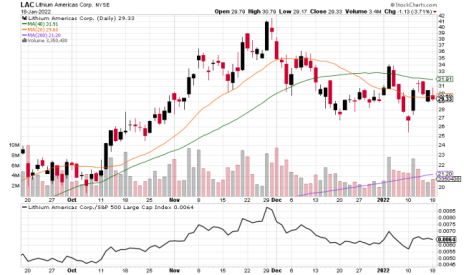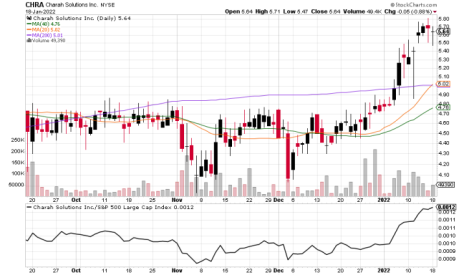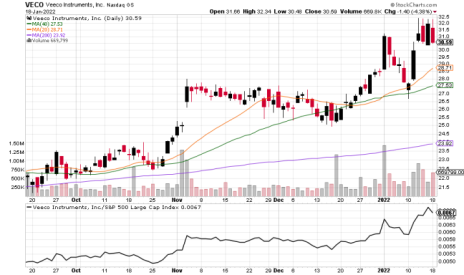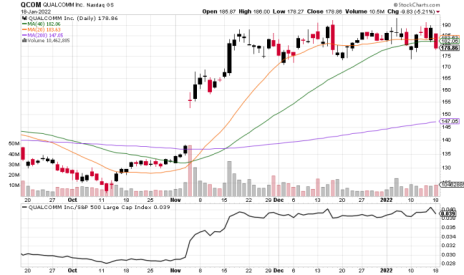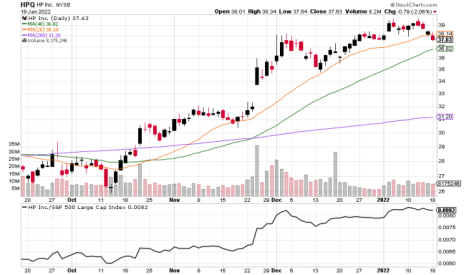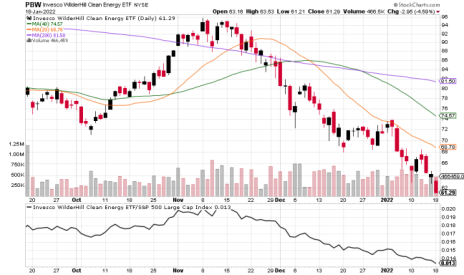This issue we take an elemental approach, in a sense, featuring two businesses at the beginning and the end of product cycles. One is a start-up that promises to soon be one of the world’s largest producers of an essential EV component. The other finds a use for mothballed power plant waste to save carbon emissions elsewhere. It just got a boon from a new EPA announcement.
As always, too, our ESG Three, Greentech Timer and an update on our Real Money and Excelsior portfolios are included.
Lithium Americas (LAC)
Overview
Lithium demand remains tight as EV and battery makers seek to secure the commodity for li-ion batteries that are the heart of electrification. It’s not new that commodities are boom and bust, with each boom sowing the seeds of the next bust. Right now, lithium is in the boom phase, as forecasted gaps between demand and supply are seen only rising for the foreseeable future. 2021 was a banner year for EVs, with sales tripling in China, rising 250% in Europe and nearly doubling in the U.S. If EVs reach half of the new car sales market by 2030, it would likely increase demand of lithium nearly nine-fold, to 3 million metric tons per year from 350,000 metric tons in 2021, according to a presentation by mining conglomerate Rio Tinto. A metric ton is about 10% larger than a ton.
Business Model
Lithium Americas (LAC) is a development-stage lithium miner that should establish itself as a top-five global producer as its mines come on line. The company is developing three properties. One is in northwest Argentina, Chaucari-Olaroz, likely to begin production in the middle of this year. The project, in a joint venture with a local producer, will end up producing 60,000 tons per annum (tpa). The first phase, of 40,000 tpa, will produce battery-quality lithium. The mine has an expected production life of 40 years. Most of the money has been spent and committed to the project. Its lithium will cost $3,600 a ton to produce, with an expected sales price of $12,000. World prices are about $10,000 right now, recovering from a tumble to about $5,000 in 2020, from a recent high of $25,000 in 2018. The second stage will begin construction this year after the first stage comes on line.
The second property comes from a November acquisition of Millennial Lithium, which is full owner and developer of Pastos Grandes, a mine in Argentina about 70 miles from the Chaucari-Olaroz mine. Pastos has a forecasted production ability of 24,000 tpa and is planned to begin production in 2024. Millennial also owned a parcel adjacent to the Chaucari-Olaroz mine. Both South American projects of Lithium America are brine-based production, in which salt waters are put in evaporation pools to collect the lithium.
More importantly for Lithium Americas is Thacker Pass, the largest known source of lithium in the U.S., in northern Nevada. Fully owned by the company, it will be one of the largest lithium mines in the world when it comes on line and should meet projected U.S. demand for lithium by itself. The mine is permitted by the Bureau of Land Management and the company is working through legal challenges from area native tribes. The suits have mainly, to date, been denied by the courts (a final appeal ruling is expected this quarter). Presuming Thacker Pass comes online, construction will begin in earnest on the plant this year, with production further off. Long term, Thacker Pass will produce 60,000 tpa, with the first four years running at a 30,000 tpa clip. The site sits within an ancient volcano, where lithium leached up and can now be removed through continuous pit mining. Lithium Americas will produce lithium through sulfuric acid leaching, a process used for other commodities but a first for lithium. The site will use renewable energy as its primary electricity source.
All told, at full production five years from now, Lithium Americas would be selling about $1.7 billion in lithium annually and generating EBITDA of $830 million from Thacker Pass and Chauchari-Olaroz, according to company projections, Based on estimates using incomplete information disclosed by Millennial Lithium, Pastos Grandes probably would produce another $60 million of EBITDA.
Issues to Consider:
- Some 27 Native American tribes hold the Thacker Pass area as important. Some consider areas of it sacred, and the caldera is believed to be site of at least two massacres by federal troops. Thacker Pass occupies just a small portion of the overall caldera, which is 22 miles wide by 28 miles long.
- A block of Thacker Pass would be very negative for shares and presents a risk to buying now.
- The company recently sold convertible debt with a share conversion price of (47.10), a 35% premium to share price at time of the sale (34.89).
- While Chaucari-Olaroz is essentially funded, Thacker Pass and Pastos Grande will require more capital, likely through additional convertible debt in the future.
- Sulfuric acid production of lithium has never been done at scale.
- Argentina will likely raise taxes on lithium producers in the future, reducing the mines’ profitability.
- Lithium prices will probably trade higher than Lithium Americas’ base $12,000 a ton base assumption in the near and medium term. Very long-term, we’ll refer to the old saying that the cure for high commodity prices is high commodity prices.
- Lithium Americas is a Canadian company. It is listed on the New York Stock Exchange as well as the Toronto Stock Exchange with the same ticker (LAC). Shares trade in parallel, based on the CAD to USD exchange rate. New York sees the most volume of the two, by far.
Technical Analysis
LAC is one of the strongest stocks in Greentech, by virtue of its Relative Strength compared to the S&P 500. Fund ownership is increasing at a good pace, a sign of long-term support. Shares themselves hit an all-time high close of 40.96 at the end of November. They were then clipped by the convertible debt issuance and retreated to a low of 26.76 on January 10. The long-term technical picture is good. Near and mid-term it’s a little mixed, likely offering a good buying opportunity as shares got extended, at 200% above the 200-day moving average’s value. They’re a more sustainable 50% ahead of the moving average at these levels.
What to Do Now
We’re going to buy on current weakness here, with shares presenting themselves as in more of a consolidation in recent weeks rather than a retracement. BUY
Lithium Americas (LAC)
Revenue (trailing twelve months): None
Earnings per share (trailing twelve months): -0.49
All-time high (intraday): 41.56
Market cap: $3.5 billion
Recommendation: Buy
Intended Portfolio: Real Money
Chara Solutions (CHRA)
Overview
Last week the Environmental Protection Agency (EPA) announced it was going to start enforcing a 2015 rule that has been largely ignored until now. The rule, Disposal of Coal Combustion Residuals From Electric Utilities, covers coal ash, also known as CCR, for coal combustion residuals. It was enacted in 2015 and requires most of the unlined coal ash ponds in the U.S. to begin closure by April of last year. Coal ash is what’s left over from burning coal for power generation, and it has been typically disposed of in (usually dry) ‘pools’ – often pits adjacent to the power plant in which the ash is dumped. The rule was ignored under the previous federal administration and while the current one has been signaling the past year it would begin to enforce the rule, there are 500 unlined ash ponds in the U.S. of which only 57 even applied for extension to closure by last April, as the rule required. There is about $75 billion worth of closures to be done, of which only about 10% has been committed. With coal plants still operating in the country, new fly ash continues to be produced at the rate of 74 million pounds annually, according to our calculations.
There is an environmentally beneficial solution: Coal ash can be used in concrete, swapping out one pound of cement for one to 1.5 pounds of fly ash. The addition makes the concrete stronger than it would be otherwise, and displaces 15% to 30% of cement creation (cement being a component of concrete). Concrete is energy intensive, responsible for 8% of global greenhouse gas emissions annually. We calculate about 41 million tons of coal ash were used by the domestic concrete industry in 2018, the last year we have various data points for.
Business Model
Chara Solutions (CHRA) is a remediator of coal ash ponds, often constructing a spur to the ash pond to use railcars to ship the ash to cement producers. Chara also will construct new, lined coal ash ponds, cap properly constructed old ones and provide related services. More recently, it has introduced a service where it will take ownership of mothballed coal plants to get the liability off utility-client books and then demolish and dispose of the plant and waste. Right now, it has operations at about 50 coal plants and will ‘benefact’ – clean and sell into cement creation – about 20 million tons of coal ash annually. Chara has operations in 30 states coast to coast and also transports to Mexico and Canada.
The company will report full year 2021 results probably in late February or early March. Chara should come in with about $280 to $300 million sales, based on management’s latest guidance from, November. That would require a minimum sales increase of 22% over Q4 2020, The company has been a money loser since coming public in 2018, but there is some expectation Chara will show it narrow its losses to near $0 for 2021. Management has been lowering debt levels, to $177 million as of September, down about $100 million in two years. Top line figures have fallen for Chara compared to past year because of the sale of its nuclear and fossil fuel management division. Adjusting for that, 2020 sales were $232 million, reflecting a pandemic slowdown, and $245 million in 2019.
Business Outlook
Consensus estimates for Chara for 2022 is that the business will generate $347 million in sales and a loss of 40 cents. Enforcement of the EPA’s CCR rule has long been seen as a catalyst for the business and should drive contract volumes. Among other tweaks by the EPA coal ash ponds lined with clay, previously categorized as lined, are now considered unlined, expanding the addressable market probably fairly sizably. State crackdowns on ash ponds were driving growth even without federal action, which has spurred large contract wins in Virginia with Dominion Energy and another, undisclosed southeastern state and utility.
Construction activity also helps Chara, which benefits from increased demand for ash for cement, especially for projects that want to be greener. Cement demand is expected to rise 3% annually for the next few years, helped in part by the infrastructure bill passed in November.
Through early November, Chara had won a record $805 million in contracts and had bids in on another $2.6 billion. Management says another $7 billion in potential contracts to bid on will come up soon, too. It’s difficult to get clarity on how much of those bids will come to fruition, and likely becomes a catalyst up or down.
Environmental Risk Transfer (ERT), the operations which buy sites from utilities to remediate, is expected to benefit from the announced closure of 17 gigawatts (GW) of coal generation by 2025. The business contributes lumpy revenue and EBITDA as remediated sites are then resold by Chara. The company’s second ERT deal began about a year ago, with Chara buying Gibbons Creek, a 6,100-acre Texas power plant and reservoir. It’s now responsible for cleaning the site within three years. Another ERT purchase, in Avon, Ohio, is expected to close the first half of this year.
The company is also marketing a product called EnviroSource, which is an onsite benefaction system for utilities to clean their ash of hazardous chemicals, making the ash suitable for onsite ash ponds. To date none have been sold and once sold, the system takes about a year to install, meaning any revenue is down the road.
There are other remediation companies that are much larger – Covanta (CVA) and Clean Harbors (CLH) are two notable ones – but Chara has a unique expertise in coal ash handling.
Issues to Consider:
- A low-priced micro-cap at $188 million, Chara brings additional inherent risks with its size and share price.
- BCP Energy, which spun off Chara as a public business in 2018 and still owns close to 40% of the business, has been selling down its position slowly since June.
- Hedge fund Portolan Capital, known for deeply researched, high conviction investments, has expanded its position by 20% in recent months, and now owns more than 10% of Chara.
- Chara trades for less than 1-times sales.
Technical Analysis
CHRA is forming a cup, a bullish formation, as shares work from a low of 4.07 in December toward 6, an area shares spent much of last spring in. Of late, shares have rallied about 20% from the EPA enforcement announcement earlier this month. The chart is setting up for a bullish Golden Cross, when the 40-day moving average crosses over the 200-day. CHRA appears a bit overbought right here, so we expect to see a pause or step back to blow off steam, before resuming their uptrend with the cross.
What to Do Now
Watch. We’re going to wait for shares to ease off their overbought condition. Most likely, we’ll see an opportunity to buy in the next week toward the mid-to-low 5 range, as the Golden Cross occurs. WATCH
Chara Solutions (CHRA)
Revenue (trailing twelve months): $266 million
Earnings per share (trailing twelve months): ($1.65)
All-time high (intraday): 12
Market cap: $188 million
Recommendation: WATCH
Intended Portfolio: Real Money
The ESG Three
The ESG Three are three technically strong stocks selected from the 200 most-held stocks in environmental, social and governance focused mutual funds and ETFs. ESG fund holdings tend to be weighted toward blue-chip companies drawn from every industry which are rated highly in social and governance aspects. We screen top performers further to eliminate widely held companies we believe have clear environmental, social and/or governance problems. These aren’t formal stock picks but suggestions for those looking to explore additional stocks beyond the Greentech portfolio.
Veeco Instruments (VECO)
What is it?
A small-cap maker of semiconductor manufacturing equipment.
Why is it ESG?
Veeco’s technology is used to make LEDs, a now-common energy efficient alternative to traditional and CFL lightbulbs, as well as the manufacturing of photovoltaic cells, among many other products. ESG funds own $10 million of shares.
Why now?
Shares are rallying through long-term resistance on sales demand. They may be a touch overextended right now at 32, a step back into the high 20s would provide a better entry point.
Qualcomm (QCOM)
What is it?
A semiconductor maker focused on the telecom industry.
Why is it ESG?
About 7% of sales are from clean technology-related products. Corporate governance is seen as positive for shareholders. ESG funds own $196 million of shares.
Why now?
Great earnings gapped shares higher in November and shares have consolidated gains since and look primed to advance higher. Shareholders of record on March 3 will receive the 68-cent quarterly dividend announced yesterday.
HP Inc (HPQ)
What is it?
A maker of personal computers.
Why is it ESG?
Strong risk mitigation practices; however, a restructuring this year will result in large employee layoffs. ESG funds own $83 million of shares.
Why now?
PC sales are stronger despite predictions tablets and smartphones would erode the market. Management says top-line growth for 2022 will be double-digits.
Greentech Timer & Current Portfolio
We all probably agree on the long-term bullish potential of Greentech, since you’re reading this. But shorter term, it has been a difficult almost 12 months, as our sector has backed off the long-term peak hit last February, settled into range-bound trading for much of the past year and then, most recently, pushed through the bottom of that range. Is there a reason to be encouraged today?
Our benchmark index, the Wilderhill Clean Energy Index, is now around a Fibonacci Retracement level today, having surrendered about 62% of the gains the sector made from the March 2020 bottom to the February peak. I’m not one for putting a great deal of adherence to Fibonacci targets, mainly because it tends to mix a bit of mysticism of the golden ratio of Fibonacci numbers – it’s a number sequence that occurs throughout nature and no one knows quite why – with an exactness that doesn’t fit with technical analysis generally; the retracement level is specifically 61.8%. Does it matter if it’s 61.5% or 62.1%? Technical analysis should be recognized as something that gets us ‘close enough’ to probable outcomes. Plus, target levels around the same levels, driven by human nature around trading, were known before the name Fibonacci was applied. Nevertheless, whatever mathematician or 20th century trader’s name we put to it, Greentech is now around a classic retracement level. That gives us hope conditions are primed for the sector to react well to a catalyst that may come along. With fourth-quarter 2021 earnings report season starting, perhaps we have one.
More practically for us as traders, Greentech is bearish today. As we’ve mentioned before there continue to be signs of health for the long-term – a good flow of IPO filings of Greentech businesses continuing (one intriguing one, Rev Renewables, a large U.S. Greentech asset owner, filed yesterday), as well as generally good earnings outlooks. As a sector, we’re weighed down by a large number of pre-revenue businesses, especially in the EV space, which have seen market support evaporate.
Our Greentech Timer is bullish when the index is above the 20-day and 40-day moving average and those averages are upward trending (ideally, the index is also above an upward trending 200-day moving average too, but not essential). Right now our Timer is bearish. It’s important to maintain sell-stops and enter trades cautiously. The solar, wind and, now, water subsectors are bearish as well. Batteries and nuclear are mixed–short-term bearish, still long-term bullish.
Current Portfolio
Real Money Portfolio
| Stock | Ticker | Buy Date | Buy Price | Price on 1/18/22 | Gain/Loss | Rating | Sell-Stop |
| Advanced Water Systems | WMS | 1/6/22 | 130.85 | 118.02 | -9.39% | Hold | Near 111 |
| Aptiv | APTV | 11/18/21 | 177.01 | 149.94 | -15.29% | Sell | Around 152.50 |
| Archaea Energy | LFG | 12/2/21 | 18.27 | 16.94 | -7.28% | Hold | Under 16 |
| Chara Solutions | CHRA | New | — | 5.74 | — | Watch | |
| Heritage Crystal-Clean Inc. | HCCI | — | — | 30.60 | — | Watch | |
| KraneShares China Green Energy | KGRN | — | — | 43.91 | — | Watch | |
| Lithium Americas | LAC | New | — | 28.89 | Buy | ||
| Onsemi | ON | 8/4/21 | 44.63 | 63.20 | 41.61% | Hold | Half at Near 60; Half Under 54 |
Excelsior Portfolio
| Security | Ticker | Buy Date | Buy Price | Price on 1/18/22 | Gain/Loss | Rating | Note |
| ADS-Tec Energy | ADSEW | 10/20/21 | 1.66 | 1.06 | -36% | Hold | |
| FuelCell Energy | FCEL | 1/6/22 | 5.20 | 4.50 | -13.46% | Buy a Half | |
| Navitas Semiconductor Warrant | NVTS.WS | 6/16/21 | 2.57 | 3.14 | 22% | Sell at 6.50 or higher | |
| Origin Materials Warrant | ORGNW | 6/16/21 | 2.43 | 1.24 | -49% | Hold | |
| Ree Warrant | REEAW | 6/16/21 | 1.10 | 0.99 | -10% | Hold | |
| ReNew Power warrant | RNWWW | 6/16/21 | 1.81 | 1.18 | -35% | Hold | |
| Volta warrant | VLTA.WS | 6/16/21 | 2.21 | 1.38 | -38% | Hold |
Sold positions
| Stock/Security | Ticker | Buy Date | Buy Price | Sell Price | Gain/Loss | Sell Date |
| Aemetis, Inc. | AMTX | 9/24/21 | 14.63 | 14.76 | 1% | 12/14/21 |
| Array Technologies | ARRY | 11/18/21 | 25.30 | 17.95 | -29% | 12/1/21 |
| Aspen Aerogels | ASPN | 10/6/21 | 45.99 | 50.12 | 9% | 12/21/21 |
| Centrus Energy | LEU | 9/21/21 | 33.46 | 69.66 | 108% | 11/17/21 |
| Centrus Energy | LEU | 9/21/21 | 33.46 | 49.68 | 48% | 12/6/21 |
| Enphase Energy | ENPH | 11/10/21 | 228.73 | 188.94 | -17% | 12/22/21 |
| ESS Tech | GWH | 11/18/21 | 14.97 | 10.33 | -31% | 1/6/22 |
| Li-Cycle Warrant | LICY.WS | 6/16/21 | 2.42 | 2.52 | 4% | 12/27/21 |
| Navitas Semiconductor Warrant | NVTS.WS | 6/16/21 | 2.57 | 6.68 | 160% | 11/18/21 |
| Wolfspeed | WOLF | 11/4/21 | 129.99 | 117.38 | -10% | 12/3/21 |
Real Money Portfolio
Our primary portfolio is the Greentech Real Money Portfolio – we invest alongside subscribers in the picks we make. That portfolio is designed to be fully invested at 12 stocks of equally sized initial investments. When the sector is bullish, we keep our cash in the ETF based on our benchmark index – the Wilderhill Clean Energy ETF (PBW). When bearish, we keep our cash in U.S. Treasury bills. We prefer to execute sell-stops on daily closes at or below our sell-stop mark, rather than intraday lows – but either way will work fine in the long-term.
Advanced Drainage Systems (WMS)
Water stocks have fallen the past few sessions, bringing the maker of drainage pipe from recycled plastics along with it. WMS is testing long term support at the 200-day moving average around 117. We have a sell-stop at ‘near 111,’ which we’ll keep, although loosening a bit to the 106 area could be considered to stay in the trade through earnings, which will be reported February 3. Shares of WMS are starting to look oversold and with the combination of support at current prices, we’ll look for a bounce back, although a push below the 200-day average before that wouldn’t be a surprise. Our rating is shifted from Buy to Hold. HOLD
Aptiv (APTV)
APTV broke through support in recent sessions on higher-than-average volume and closed beneath our sell-stop of 152.50 Tuesday. We recommend selling today. SELL
Archaea Energy (LFG)
The landfill gas producer has fallen beneath its 200-day moving average on general market concerns, rather than anything specific with Archaea. Buyers came in to close shares in the top of yesterday’s trading range, a positive sign. Our sell-stop is ‘under 16.’ HOLD
Heritage-Crystal Clean (HCCI)
Current market conditions and a test of important support for HCCI at around 30 keeps us on the sidelines for now, especially as technicals suggest shares may have a little more downside before turning higher. WATCH
KraneShares China Green Energy (KGRN)
Price internals seem to say some weakness is ahead still for the ETF of China-listed Greentech stocks and near-term trendlines say the fund is in a downtrend, with multiple levels of resistance ahead. Continue to watch. WATCH
Onsemi (ON)
Semiconductors continue to be a bright spot in the market. Onsemi has plateaued for now, but looks just fine. Earnings are tentatively slated for January 31, with consensus for $6.7 billion of sales and $2.80 EPS. Our sell-stop recommendation: sell half the position if shares fall to ‘near 60’ and book the rest of profits if we tumble to ‘under 54.’ BUY
Excelsior Portfolio
Excelsior is our special opportunities portfolio, and is managed without consideration to the Real Money Portfolio. We may or may not recommend sell-stops in Excelsior.
In June we purchased five SPAC warrant positions as a basket trade: Navitas, Li-Cycle, ReNew, Ree and Volta. Li-Cycle was closed at a 4% profit in December.
ADS-Tec Energy (ADSEW)
A new presentation from the company contends the total cost of ownership of a ChargeBox, its battery buffered ultra-fast EV charger, is 30% less than high speed, non-buffered competitors. ADS-Tec charges more for its box, $200,000 versus discounted $120,000 of an unnamed competitor, but there are much higher installation costs and complexity with competitors. The company also indicated a large-scale energy storage and management business continues to have legs, though the focus primarily is on EV chargers now. Recent weakness in the warrants is a bit of a mystery, though moves down are on light volume, with signs of opportunistic buying on good volume. HOLD
FuelCell Energy (FCEL)
Our half-sized equity position in the fuel cell maker is a long-term bet, so we will grit our teeth and accept deep drawdowns here, since fuel cells are more bearish when Greentech is bearish, a trade-off for the fact they will well outpace Greentech in a bull move. Shares are in a zone that should provide support down. BUY A HALF
Navitas Semiconductor (NVTSW)
Warrants have fallen sharply over the past two weeks, now trading around 3. There’s no news for Navitas, so we surmise the weakness is general growth stock aversion on inflation fears. We have a standing sell order at 6.50 on the quarter-sized position we hold on the EV-focused semiconductor maker. We sold three-quarters in mid-November at 6.68, booking 160% profit on that portion. SELL at 6.50 or higher.
Origin Materials (ORGNW)
Warrants are down further this week, to a recent 1.22. Analysts on Wall Street rate the underlying stock a consensus ‘buy,’ with an average ‘target’ 16.75, implying our warrants should be worth 4.75. Origin has an order book of $4.2 billion for its carbon negative plastics, which it will start producing by year’s end. HOLD
Ree Automotive (REEAW)
The spate of enthusiasm around Ree’s shares and warrants has dissipated, and warrants have backslid to 99 cents recently. The maker of unique EV chassis continues to make progress on alliances for commercialization, which gives us long-term optimism. HOLD
ReNew Energy Global (RNWWW)
India’s largest renewable energy owner/operator has been under selling pressure in recent weeks, brought on by part owner Goldman Sachs filing to sell a chunk of shares. The warrants are down 15 cents this week to 1.15 on little other news. HOLD
Volta Inc (VLTA.WS)
No news for the EV charger maker. Warrants are mildly weaker, as are the underlying shares. HOLD.
Thank you for being a subscriber. Our next SX Greentech Advisor issue will be published Wednesday, February 2. Our regularly scheduled update comes Wednesday, January 26. We’ll alert you with any buy and sell recommendations as needed. I welcome your comments and questions anytime and am eager to assist you in profiting from Greentech. Reach me at brendan@cabot.net.
The next Sector Xpress Greentech Advisor issue will be published on February 2, 2022.
